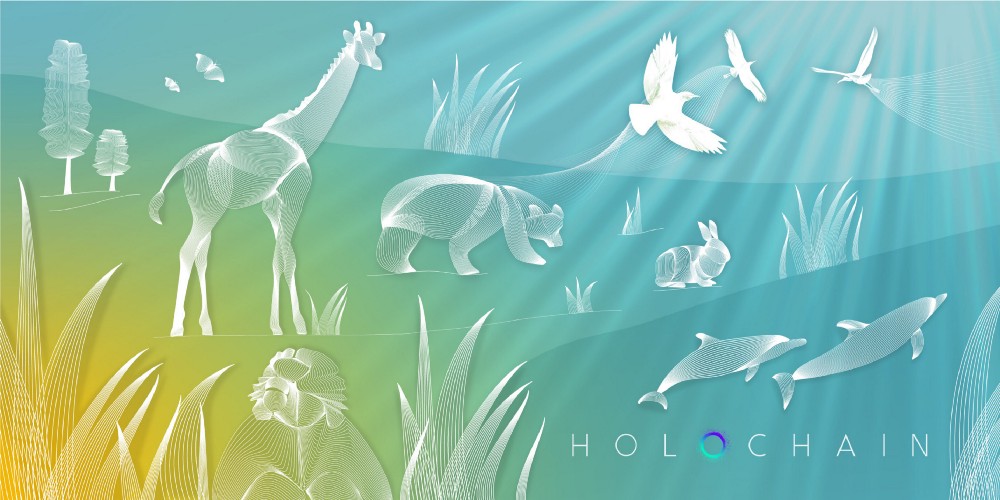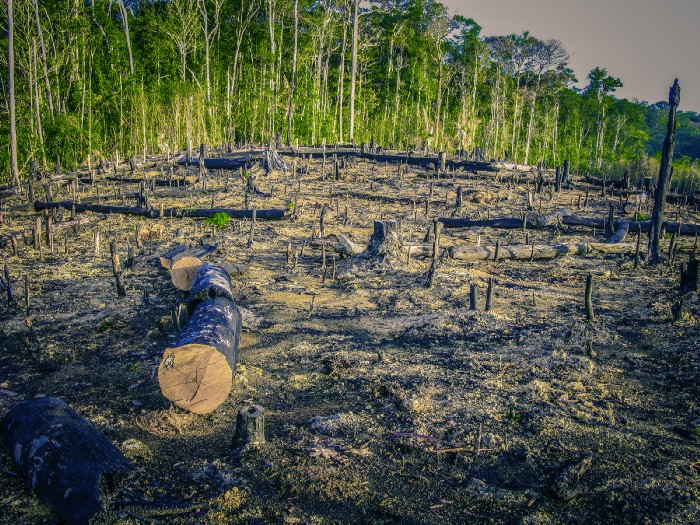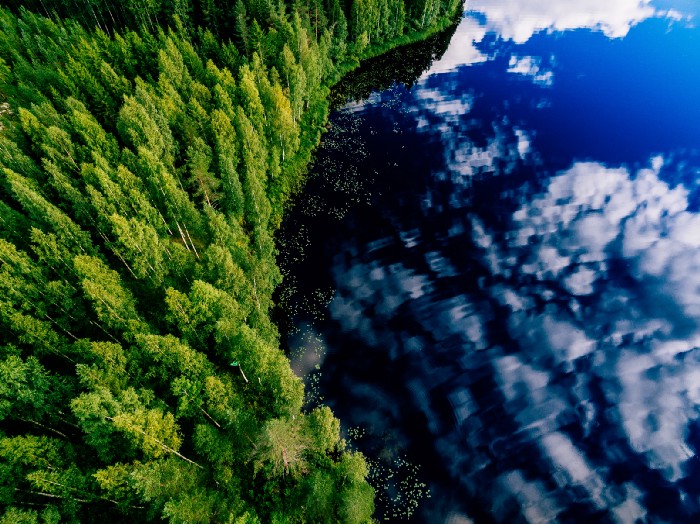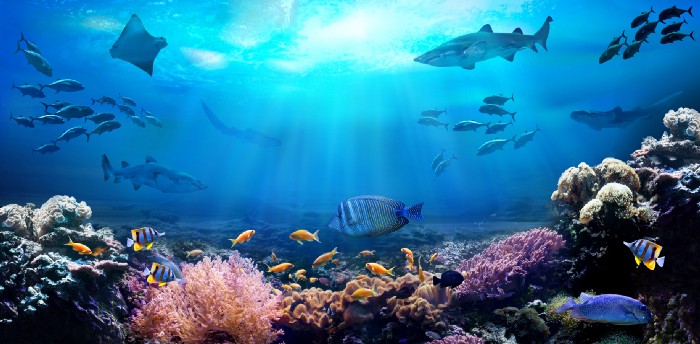The Holocene Explosion (2.4) - Game-Changing Possibilities in a World of Unenclosable Carriers
[Originally published on Medium]
The NextNet Series Part 2.4 of 3: Saving the Planet
In collaboration with Josh Zemel

Here we continue the exploration of how unencloseable carriers could free us from critical limitations across a number of macro-systemic domains and help unleash an explosion of human creativity and social organizing. We recommend starting with Part 1: Unencloseable Carriers and the Future of Communication — as well as Part 2.1 on food systems, Part 2.2 on energy systems, and Part 2.3 on financial systems— before reading Part 2.4 here.
In this article, we look at saving the planet.
The problem:
There are many problems in this territory: we are outstripping the carrying capacity of our ecosystem, causing species extinctions, and polluting the oceans and atmosphere. So let’s narrow it down for illustration and focus on the fact that the planet’s rainforests are being destroyed at a rate faster than they can renew [1] [2] [3] due to destructive policies that are out of touch with the importance of rainforests to our planet’s health, combined with the desirability of rainforest land for farming and oil exploration.

But what if…
… these are actually symptoms of a deeper cause: that our enclosable, debt-driven systems of money have led us to account for the value of a rainforest in short-term and shallow ways, making it inevitable that its stewards would choose to liquidate it now versus reap its benefits over time?
What is the true value of an acre of rainforest? It may be difficult to place a number, but any true-value calculation would have to account for the myriad ways the forest contributes to the greater ecosystem (and the economy) by continuing to exist: the carbon storage that keeps the planet from overheating, the oxygen supply that keeps us breathing, the rare tropical hardwoods which might be harvested sustainably, the utility of plants as food and medicine, the biodiversity that took billions of years to evolve and helps sustain food chains worldwide.
Which means there’s (at least) two issues at play here, if we break things down. One is the oppressive time cost of money: it’s better to get $10M now than $20M over the next 20 years. The other is that financial accounting is an inadequate representation of wealth in a complex system: landowners get paid for lumber and crops, not preservation of the atmosphere. Without proper accounting for externalities, it’s inevitable that we eat the world for profit, unsustainably extracting natural resources for their cash value.
There are alternatives.
Hoarding taxes.
The idea of a hoarding tax, or demurrage, is to introduce a carrying cost of holding money, which functions as an antidote to the time cost of money and spurs economic activity. Accounts that have been inactive for an extended period get debited a demurrage when performing a new transaction, with the fees going to a common credit pool that benefits everyone. So, rather than being incentivized to convert real-world assets into money as soon as possible, you’re incentivized to invest in real value-creating assets that can be nurtured and grown over time, yielding money on an ongoing basis… like a forest.
Sharing economies.
Sharing economies revisit the types of stewardship structures that define use of and access to resources. Is it necessary (and is it beneficial) for us to outright own as much as we currently do? Sharing economies reconsider this question.
For example: How many hours of use per year does the average suburban lawnmower see? Maybe an hour a week at most for part of the year? That means they sit idle more than 99.8% of the time… yet it’s typical to have one in every household, causing all manner of negative externalities through their manufacturing, raw materials, waste, and (often) indoor storage space. Conventional wisdom labels the manufacture of all these lawnmowers “good for the economy”, but it’s laughably (and sadly) missing the bigger picture. Imagine the massive net benefit if neighborhoods could easily coordinate their use of lawnmowers through a shared-ownership, shared-use system built on unenclosable carriers.
Expanding outward, cars also seem ripe for this kind of exploration, as do kitchens and laundry spaces in many cases. In an extreme case, perhaps even land one day might not be individually owned, but rather commonly owned and privately leased. This is the basis of Georgist economics, or Georgism, which also imagines that lessees could reap benefits from improving the land and be taxed for extracting resources from the land.

But we actually don’t need to go full Georgist to imagine hybrid systems that retain basic property ownership but increase sharing, which would still lead to more efficient use of resources. We’ve written in the past about a kind of land-weaving society in which land owners permit the use of their property for a variety of beneficial purposes, using reputation and certification to authorize access. If I have a permaculture certification, for example, I might be invited to farm your land, perhaps for a fee or a share of yield. Other certifications might permit me to sustainably harvest wood, gather food or medicinal herbs, hunt, or graze my livestock. “No Trespassing” signs could be replaced by technologically enabled “Enter Here” checkpoints, with RFID or smartphone-based tracking and micropayments automatically transferring if appropriate.
For a land-weaving type of approach to remain effective at any kind of scale, of course, it would be critical that the systems for granting and tracking access — and for reputations and certifications — be guaranteed to always remain fully decentralized, which means being built on a network of unenclosable carriers like Holochain.
This could be game-changing.
What’s typical today is that only those who own or fully rent a piece of land can make much use of it. But this tight coupling of ownership and stewardship makes for massive stores of idle wealth, which is so often more lucrative to liquidate for cash in one way or another than it is to hold. But we can begin to imagine how, if we decouple ownership from stewardship as in a land-weaving concept, the balance could tip toward preserving rather than destroying, say, a rainforest.
The closest analog we have today to what something like this might look like might be national parks, but these exist mainly as nature preserves reliant on government subsidies (and a bit of tourism revenue). As a result, they are subject to all the complications of centralized power, including lobbying, politically motivated government shutdowns, and even unilateral declassification by a single individual.

In order to truly tip the balance such that preservation is advantageous, therefore, we need to imagine multiple land uses happening simultaneously: not just ecotourism, or harvesting edibles, or gathering medicinals, or sustainably gathering wood, but all of these and more, all gated through the appropriate membranes of access such as certifications, reputation systems, and fee structures.
And because each of these land uses are complex in their own right, it might not be one enterprise operating all of them, but various enterprises doing work within their zones of core competency, operating choreographically with one another to maximize efficiency. For instance, the group permitted to harvest lumber might mark the trees they plan to cut down with three months’ notice, so that the gatherers could prioritize harvesting food, herbs, and other materials from those trees in particular. The type of coordination this requires is what makes unenclosable carriers so important.
Growing What’s Ours
Extrapolating from the idea of sharing economies, we might begin to completely reimagine what it means to solve for scarcity in general. As the naturalist Paul Krafel has pointed out in his enlightening (if productionally challenged) short film The Upward Spiral, there are basically two approaches to creating abundance when faced with limited resources: one is to maximize one’s own personal gain at the expense of others’, and the other is to utilize as few extractive or non-renewable resources as possible, instead relying more on more freely available, renewable resources, and working to preserve, expand, and improve those shareable resources.
We call the first strategy “get mine”, and we call the second “grow ours”. And what’s fascinating is that if you look across natural history, it’s “grow ours” that evolution selects for over time, contrary to what we might infer from the “survival of the fittest” narrative dominant throughout our cultural understanding of evolution and dramatized in nature documentaries. Natural selection is actually better understood as “survival of the fit”, as in “those whose characteristics are most fit for their environs are most likely to survive”. And a great way of being highly fit to one’s environs is to require relatively few non-renewable resources (minimizing “getting mine”) while producing an abundance of valuable resources to the ecosystem (maximizing “growing ours”).

This idea is supported by the fact that plants, who need only the abundantly renewable resources sunlight, air, and water to produce all the carbon-sugars that comprise our planetary food chain, are tremendously successful, making up the majority of biomass on the planet. Carnivorous mammals, at the other end of the food chain, are relatively rare. But even carnivores typically take only what they need, and not more than can be renewed, from their surroundings and from prey populations.
Human systems are not exempt from the dynamics of “get mine” or “grow ours”. While conventional wisdom might suggest that in order to win we need to extract more than we put in, of course that’s not true from a long-term standpoint. Which company truly has a competitive advantage in the long run: the one that requires fewer resources to provide maximal value to the marketplace, or the one that uses more resources to provide minimal value? Obviously the one that requires less, yet any story of success that focuses only on short-term profit would have us believe otherwise. But just like colonies of bacteria, yeast, or insects that lack sustainability feedback mechanisms, humans populations that maximize “get mine” instead of “grow ours” will end up overconsuming their environments and causing their own demise.
In order for humans to re-norm and actually “grow ours”, however, we need better tracking and incentive systems, such as well-designed currencies, reputation systems, and payment systems. It’s time for a new era of mutual stewardship — one that dismantles the tragedy of the commons, aided by unenclosable technologies that enable the creation and enforcement of mutual agreements.
One Small Step for Holochain, One Holocene Explosion for Humankind
This chapter of the NextNet Series (Parts 2.1, 2.2, 2.3, and this article, Part 2.4) has offered some examples of what becomes possible in a system of unenclosable carriers, but really that’s just the beginning. A world of truly unfettered creativity and truly free association means not just mutual credit, peer energy exchanges, and land-weaving, but the ability to continually invent and evolve new experiments and paradigms, at a rate and level of creativity we can barely comprehend.
When the Cambrian Explosion of life forms began 541 million years ago, the subsequent 20 million years gave birth to most of the biological diversity that exists today, catalyzed by the information carrier we know as DNA. In a similar way, we’re now seeing the rise of social DNA, foretelling a corresponding proliferation of new social organisms. Social organisms are the ways humans organize themselves into patterns, such that the pattern lives on even as the participants (the cells) within them change. Corporations and governments have been the predominant social organisms over the past few centuries, though that’s already been changing with the rise of online communities, liquid democracies, and DAOs. Now, unencloseable technologies like Holochain are poised to enable a complete reimagining of social organization, opening up a cornucopia of new frontiers still to be discovered.
Think of this as the Holocene Explosion of social life forms.
To hint at the scope of something like this, let’s tune in to one more thought experiment. Imagine you’re the CEO of a huge multinational corporation, and it’s your job to keep a pulse on the whole organization and to identify, diagnose, and resolve issues as they arise. Today, you get the information you need from periodic reports that are passed up to you in lengthy reports containing financial statements and other long-form statistics. The report has taken time to compile from all the different departments and field locations, so by the time you receive it it’s not very current. Plus it takes you time to read it, digest it into a mental model, and hopefully draw some kind of useful conclusions about the complex system the data represents.
But let’s say that this is the future, and you get your information very differently. What you’re looking at is not a 400-page report, but rather a nature scene depicted on a screen — maybe an aquarium of fish, a bit like the old screensavers. Each type of fish represents some part of the massive, complex system you’re managing, while the fishes’ behavior — like how fast or high they’re swimming, or how coordinated a school’s movements — represents some metrics, interpreted and compiled by the sort of advanced intelligence that’s already available today.

What works so well about this scenario is not just that the data is delivered in real time, but also that it’s delivered in a format that is consistent with how the human perceptual system is designed to operate. You have on the wall in your office not paragraphs, charts, and graphs, but a simulated ecosystem acting as the real-time health monitor of a complex system, displayed in such a way that you can take in large amounts of information at a glance, millions of simultaneous data points even, by observing patterns among the fish or their environs: the rippling seaweed, the blooming algae, the bubbles, the water’s cloudiness, the current, the light. When something seems “off”, you open up an interface on your desktop, click on the item of interest, and drill in for more information.
Imagine how effective you would be at taking the pulse of a system and adapting to it under these conditions.
Now imagine that it’s not just the CEO who has access to this monitor, but actually everyone in the company as well, in corners of their screens or on the walls in their departments, maybe with their views adapted according to what’s most relevant for their work. Now instead of only a few executives being responsible for managing everything, the whole is holding the whole. Everyone can see the system they’re impacting, feel a direct relationship to it, and problem-solve for its optimal health. Can you imagine how the spirit of “grow ours” could spread across an organization if all the people who were actually doing the work to bring about change could see the effect of their activities on the system?
And now consider applying these kinds of feedback mechanisms to all manner of global conditions: intercontinental trade, harmony among peoples, and, yes, the health of rainforests, oceans, and the atmosphere. How much faster might we solve humanity’s most intractable problems if we were all seeing the impact of our collective action in real time? If we were problem-solving not through marching-in-the-streets social activism to compel power brokers to act against their own scarcity-economics interests, but rather through the lens of humankind’s nearly-unlimited collective creativity?
What we’re talking about here is a vast quantum leap in coordinative capacity that doesn’t actually require a vast leap in technological capacity, at least not in the “high-tech” sense. It’s a technology breakthrough the way that language is a breakthrough in technology. Sure, this particular language explosion is cryptographically enabled in order to create unenclosable coordination platforms on which to build forever-decentralized software applications, but the fundamentals of this shift are still more similar to the advancement of languages than advancements in rocket science or nuclear physics. New, unenclosable coordination patterns lead to new economic patterns and, in turn, new creative ecosystems.
In the final chapter in the NextNet Series, we’ll look at how Holochain is designed to be just such a coordinative technology, and we’ll show you how it’s being used to start unleashing the Holocene Explosion of unfettered creativity and human flourishing.
Arthur Brock
HOLOCHAIN · CRYPTO · BLOCKCHAIN · DISTRIBUTED SYSTEMS
